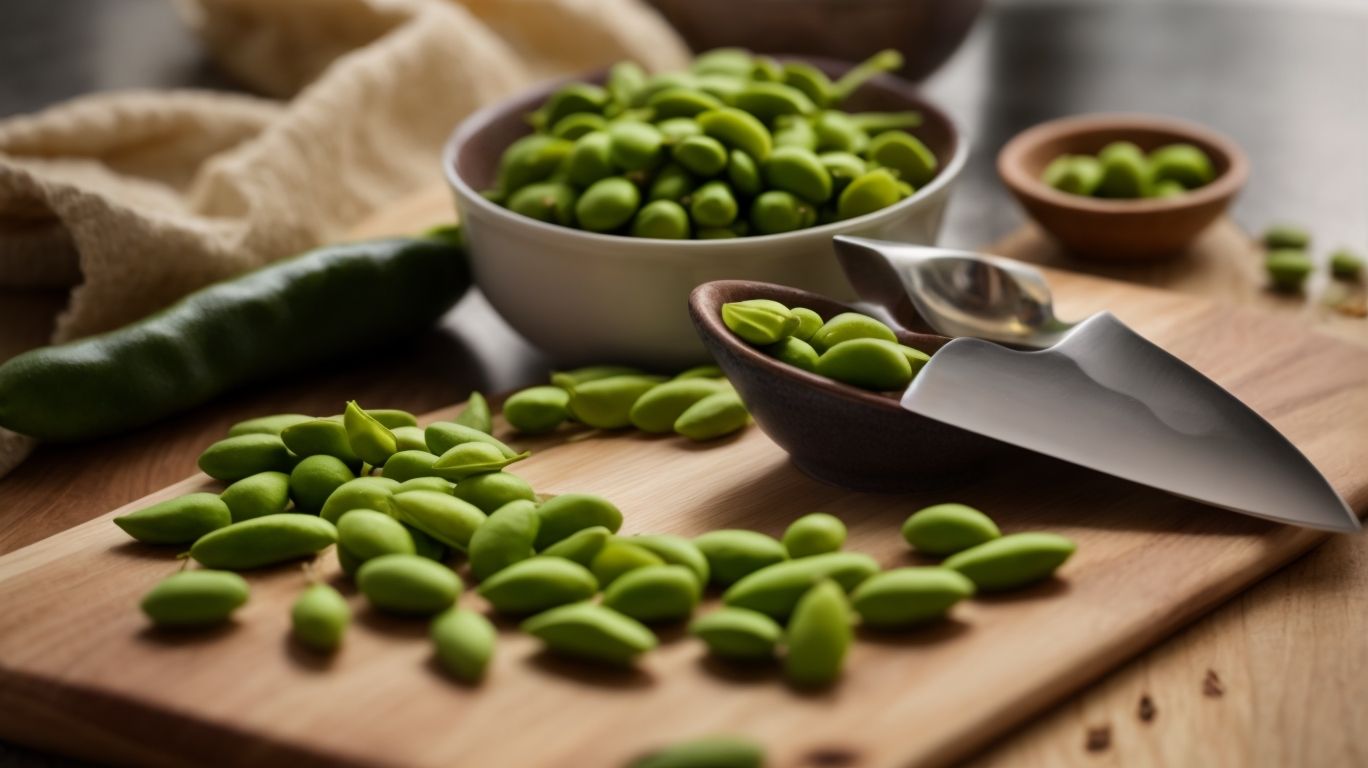How to Cook Edamame?
Curious about edamame and how to incorporate this nutritious legume into your diet?
In this article, we’ll explore what edamame is, where to find it, and its impressive nutritional benefits.
From high protein content to a wide array of vitamins and minerals, edamame is a powerhouse ingredient. We’ll also cover different cooking methods, delicious recipes, and essential tips for selecting and preparing fresh edamame.
Stay tuned to elevate your culinary skills with this versatile and healthy ingredient!
Key Takeaways:
What Is Edamame?
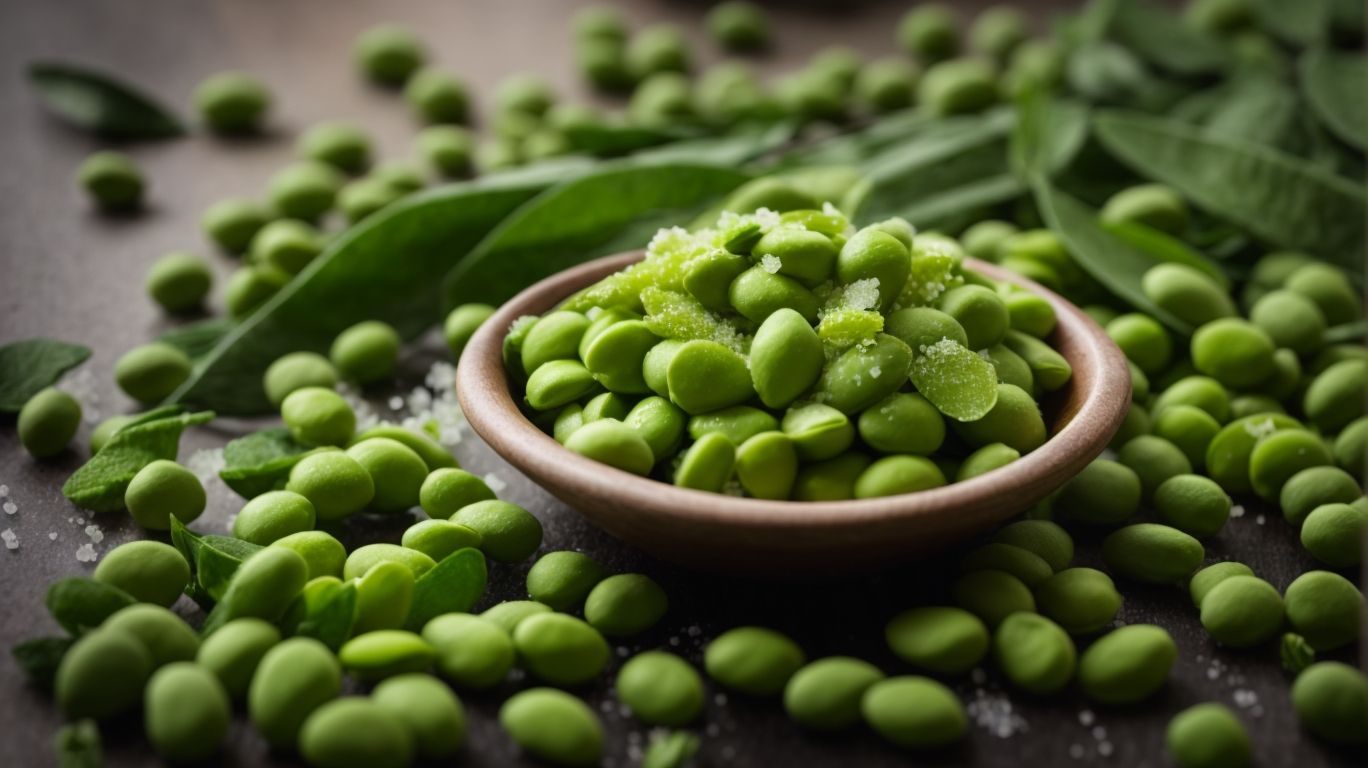
Credits: Poormet.Com – Mason Hall
Edamame, a popular Japanese appetizer, refers to young soybeans that are harvested before they ripen and are often enjoyed as a healthy and tasty snack.
In Japanese cuisine, edamame holds a special place, often served as a starter or side dish. These young soybeans are not only delicious but also pack a nutritional punch, providing plant-based protein, fiber, and essential nutrients. Traditionally, edamame is boiled in salted water until tender, and then sprinkled with coarse salt before serving. The delightful ritual of popping the beans out of their pods adds to the joy of consuming this delightful snack, creating a fun and interactive dining experience.
Where Can You Find Edamame?
Edamame can be found in both fresh and frozen forms at various grocery stores, Asian markets, and health food stores, providing convenient options for those looking to incorporate this nutritious legume into their diet.
When seeking out edamame, it’s important to consider the benefits of each type. Fresh edamame offers a crisp texture and slightly sweeter taste, ideal for quick cooking or snacking. On the other hand, frozen edamame provides a longer shelf life and the convenience of having it readily available in the freezer for use in various dishes.
While grocery stores are a common go-to for purchasing edamame, don’t overlook your local Asian markets, where you might find a wider selection of both fresh and frozen options. Health food stores also tend to have organic and non-GMO varieties of edamame, catering to those with specific dietary preferences.
What Are The Nutritional Benefits Of Edamame?
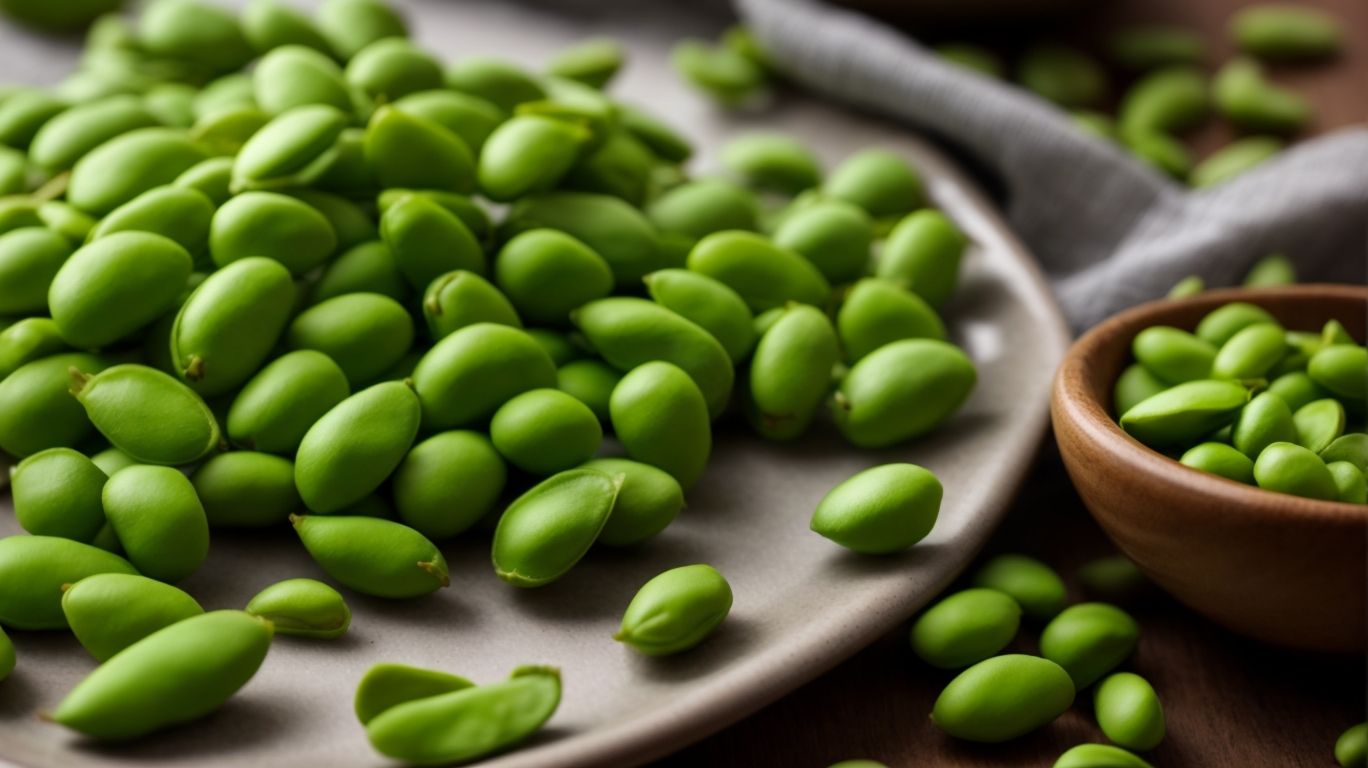
Credits: Poormet.Com – Raymond Martinez
Edamame is a nutritional powerhouse, rich in protein, vitamins, and minerals, making it a valuable addition to a balanced diet for those seeking healthful options.
One of the standout features of edamame is its high protein content, offering a plant-based source of this essential macronutrient. Along with protein, edamame is packed with a variety of vitamins, including vitamin K, vitamin C, and various B vitamins, such as folate. These vitamins play crucial roles in supporting overall health and aiding in various bodily functions. Edamame is a good source of minerals like iron, magnesium, and potassium, which contribute to maintaining optimal health and wellness.
High In Protein
Edamame stands out for its high protein content, providing a plant-based source of this essential macronutrient that is vital for muscle repair, growth, and overall health.
Protein plays a crucial role in the human body, acting as the building blocks for tissues, muscles, enzymes, and hormones. Incorporating sufficient protein into your diet is essential for optimal body function and overall well-being. Edamame not only offers a rich protein source but also contains all nine essential amino acids required by the body. This makes it a complete plant-based protein, perfect for individuals following a vegetarian or vegan diet. Plant-based protein sources like edamame are often low in saturated fats, making them a heart-healthy choice for boosting protein intake.
Rich In Fiber
Edamame is a fiber-rich food, offering dietary fiber that supports digestive health, aids in satiety, and helps regulate blood sugar levels, making it a valuable component of a balanced diet.
Not only does fiber in edamame promote a healthy digestive system by aiding in regular bowel movements and maintaining gut health, but it also plays a crucial role in creating a feeling of fullness, which can help in weight management. Fiber helps slow down the digestion process, leading to more stable blood sugar levels and reducing the likelihood of spikes and crashes.
Incorporating foods like edamame, rich in fiber, into your daily meals can have a significant impact on your overall well-being. Meeting the recommended daily intake of fiber is essential for proper digestion, weight management, and maintaining optimal blood sugar levels.
Packed With Vitamins And Minerals
Edamame is a nutrient-dense food, packed with essential vitamins and minerals such as vitamin K, folate, and manganese, offering a range of health benefits that support overall well-being.
Vitamin K plays a crucial role in blood clotting and bone health, while folate is vital for cell division and DNA synthesis. Manganese, on the other hand, acts as an antioxidant, protecting cells from damage.
These nutrients in edamame help in maintaining healthy skin, optimizing brain function, and promoting a strong immune system. Including edamame in your diet can also aid in reducing the risk of chronic diseases such as heart disease and osteoporosis due to its rich nutrient profile.
What Are The Different Ways To Cook Edamame?
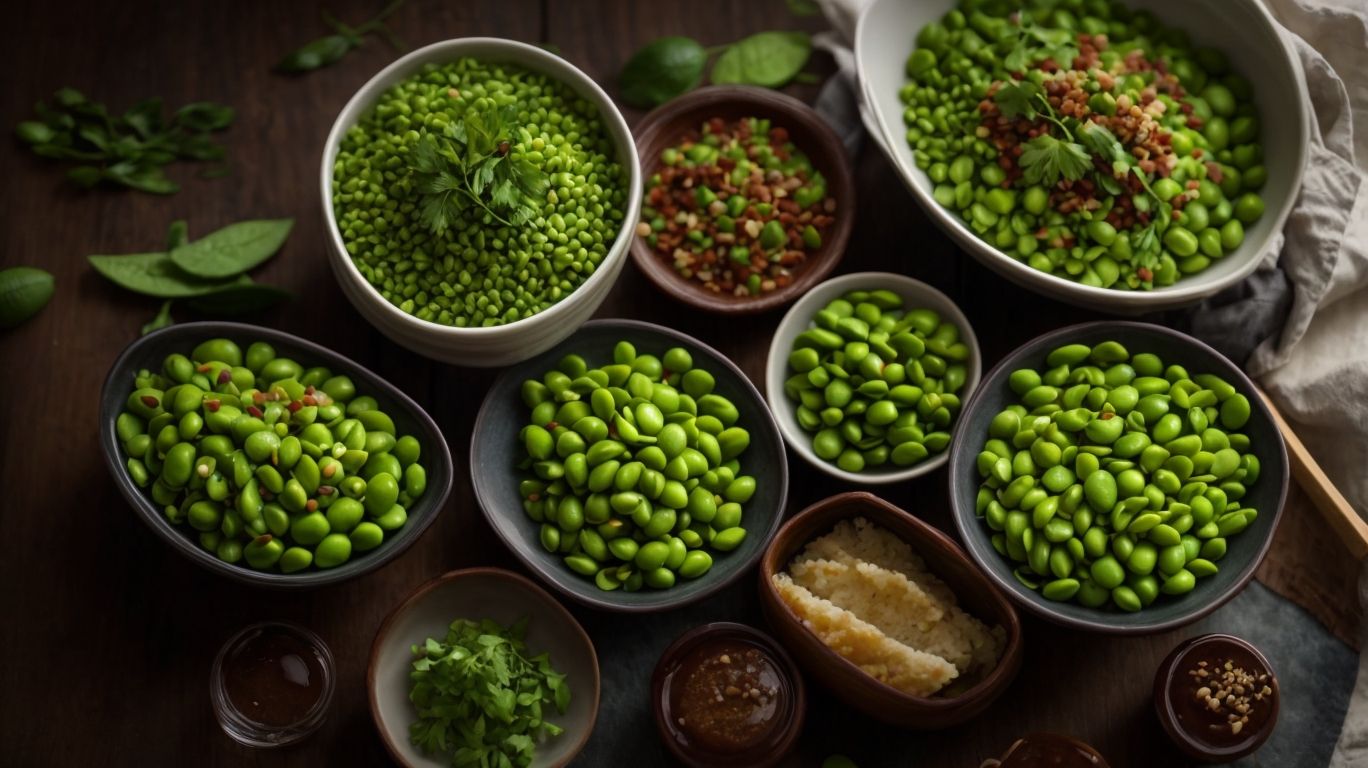
Credits: Poormet.Com – Brian Jones
There are several cooking methods for preparing edamame, including boiling, steaming, and seasoning, each offering unique flavors and textures that cater to varied taste preferences.
When boiling edamame, ensure to not overcook, as it can result in a mushy texture; instead, aim for a vibrant green color and a slight crunch.
Steaming edamame is a healthier alternative to boiling, as it helps retain more nutrients. Sprinkling a pinch of sea salt or soy sauce after steaming can elevate the natural umami taste.
Experiment with different seasonings like garlic powder, chili flakes, or sesame oil to create exciting flavor profiles. You can also toss steamed edamame with a drizzle of honey and a sprinkle of roasted sesame seeds for a sweet-savory kick.
Boiling
Boiling is a simple and effective method to cook edamame, as it helps retain the natural flavors of the soybeans while allowing for the infusion of various seasonings like garlic, ginger, or soy sauce for added taste.
When boiling edamame, start by bringing a pot of salted water to a rolling boil before adding the edamame pods. Let them cook for about 5-7 minutes until they become tender but still have a slight crunch. Boiling ensures that the edamame maintains its vibrant green color and crisp texture, making it a visually appealing and nutritious snack or side dish.
- One of the benefits of boiling edamame is its simplicity and quick cooking time, making it a convenient option for a healthy snack or appetizer.
- After boiling, you can season the edamame with a variety of flavors such as minced garlic, freshly grated ginger, or a drizzle of soy sauce to enhance its taste profile.
Steaming
Steaming edamame is a gentle cooking technique that preserves the nutrients and vibrant color of the soybeans, allowing for the drizzling of savory sauces like soy sauce, maple syrup, or Sambal Oelek for additional flavor.
Steaming the edamame beans helps to retain their nutritional value, unlike boiling where some nutrients may leach out into the water. The bright green hue of the edamame pods remains intact after steaming, making them visually appealing on the plate.
In terms of enhancing the taste of steamed edamame, the sauce options are plentiful. A classic choice is to sprinkle them with a touch of sea salt or dip them in a zesty soy sauce. For a sweeter kick, drizzle maple syrup over the warm edamame or add a hint of heat with some Sambal Oelek.
Microwaving
Microwaving edamame is a quick and convenient method to cook these soybeans, allowing for easy spicing with ingredients like Sriracha, garlic, or red pepper flakes to create a spicy and flavorful snack or appetizer.
The microwave cooks edamame in mere minutes, making it ideal for those looking for a fast and fuss-free cooking option. Simply place the edamame in a microwave-safe dish, sprinkle with your desired spicy seasonings like Sriracha or garlic, cover, and heat until warm. The microwave not only speeds up the cooking process but also retains the natural flavors and nutrients of the edamame, ensuring a delicious and healthy snack. For an extra kick, try adding a pinch of red pepper flakes for a fiery finish!
Roasting
Roasting edamame involves pan-searing the soybeans to achieve a crispy texture and simple flavor profile, making it an easy and delightful way to enjoy this nutritious snack or side dish.
The process of pan-searing edamame not only enhances its nutty flavor but also creates a satisfying crunch that elevates the overall eating experience. To achieve the perfect texture, ensure that the pan is preheated to high heat before adding the edamame. A light drizzle of olive oil and a sprinkle of sea salt can further accentuate the natural flavors of the soybeans.
What Are Some Delicious Recipes Using Edamame?
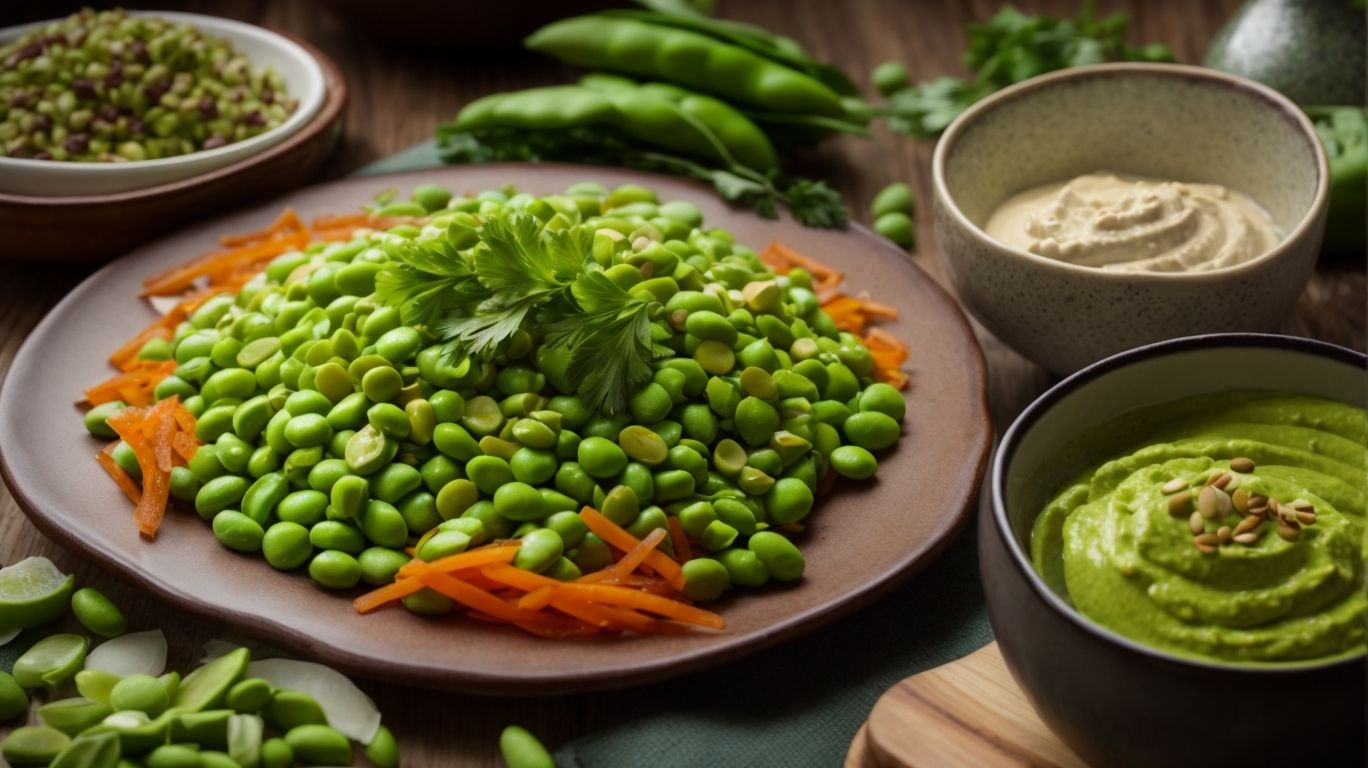
Credits: Poormet.Com – Russell Rivera
There are numerous delectable recipes that feature edamame as a key ingredient, such as Edamame Hummus, Edamame Fried Rice, and Edamame and Avocado Salad, offering a variety of flavors and textures to tantalize your taste buds.
For a savory start, try preparing a creamy Edamame Hummus dip, perfect for spreading on crackers or dipping with fresh veggies. The velvety consistency of cooked edamame blended with tahini, lemon juice, and garlic creates a luxurious flavor profile that will leave you craving more.
If you prefer something heartier, whip up a delightful Edamame Fried Rice dish, combining the nutty taste of edamame with fluffy grains of rice, soy sauce, and your choice of vegetables or protein for a satisfying one-pan meal.
For a refreshing option, toss together a vibrant Edamame and Avocado Salad bursting with colors and flavors. The crisp edamame pods pair beautifully with creamy avocado, cherry tomatoes, and a zesty dressing, elevating your salad game with every bite.
Edamame Hummus
Edamame Hummus is a delightful twist on the classic chickpea spread, blending the creamy texture of edamame with flavorful seasonings like garlic, ginger, and a drizzle of sesame oil for a unique and savory appetizer experience.
Preparing this delectable hummus variant involves a simple process where the edamame beans are cooked until tender, then blended with tahini, lemon juice, and a hint of cumin for that perfect balance of flavors. The addition of sesame oil brings a nutty undertone, elevating the dish to a whole new level of taste sensation.
The fusion of earthy edamame with zesty ginger and aromatic garlic creates a harmony of flavors that will captivate your palate. This innovative appetizer is not only delicious but also packed with plant-based protein and nutrients, making it a wholesome choice for any occasion.
Edamame Fried Rice
Edamame Fried Rice is a delicious and simple dish that combines the nuttiness of edamame with the savory flavors of stir-fried rice, enhanced by a touch of soy sauce and the aroma of sesame oil for a satisfying meal option.
One of the best things about preparing Edamame Fried Rice is its straightforward method that can easily be mastered by beginners in the kitchen. To start, gather your ingredients such as cooked rice, edamame beans, vegetables of your choice, soy sauce, and sesame oil. In a hot pan, stir-fry the cooked rice with edamame, adding a drizzle of soy sauce for that umami depth. The simplicity of this recipe allows you to customize it by including your favorite veggies or proteins for a wholesome meal.
Edamame and Avocado Salad
Edamame and Avocado Salad is a nutritious and protein-packed dish that combines the creaminess of avocado with the crunch of edamame, drizzled with a zesty dressing made with grape seed or safflower oil, sea salt, and a sprinkle of togarashi for added flavor.
This salad bursts with vibrant colors and fresh flavors, making it a delightful addition to any meal. The rich avocado provides a velvety texture, perfectly complemented by the nutty taste of edamame. A great source of protein, this salad offers a satisfying and nutritious option for those seeking a healthy dish. With a touch of spice from the togarashi, each bite offers a harmonious blend of textures and tastes, creating a refreshing and wholesome culinary experience.
Tips For Cooking Edamame
Mastering the art of cooking edamame involves knowing how to choose fresh soybeans, store them properly, and prepare them for cooking, ensuring that you capture the natural flavors and textures of this versatile ingredient.
When selecting fresh edamame, look for pods that are plump and bright green. Avoid any that appear discolored or shriveled. To store them correctly, place the pods in a breathable bag or container in the refrigerator, but remember not to wash them until right before cooking.
Preparing edamame is simple – all you need to do is boil salted water, add the soybeans, and cook for about 5 minutes until tender. For a flavorful twist, consider adding a touch of ginger during the cooking process.
How To Choose Fresh Edamame
Selecting fresh edamame involves looking for plump and vibrant green pods, ensuring that they have a firm texture and avoiding any signs of discoloration or wilting, to guarantee a delicious and satisfying culinary experience.
When choosing edamame, pay attention to the overall sheen of the pods, as a glossy appearance indicates freshness. Gently squeeze the pods to assess their firmness; they should yield slightly but not be mushy.
Inspect the seams of the pods; they should be tightly closed, a sign of maturity and freshness. A quick test to gauge freshness is by snapping a pod in half; it should produce a crisp sound and reveal plump, crisp beans.
For optimal flavor, select edamame with a sweet, grassy scent that indicates it was recently harvested.
How To Store Edamame
Properly storing edamame involves refrigerating fresh pods in a perforated plastic bag or freezing them for extended preservation, ensuring that the soybeans retain their flavor and nutritional value for future culinary creations.
To maintain the freshness and quality of edamame, it is advisable to consume the refrigerated pods within 2-3 days to ensure optimal taste. For freezing, blanching the pods in hot water for 2 minutes before transferring them to an airtight container or freezer bag can help lock in their freshness. Storing edamame in the freezer extends their shelf life for up to 8 months. When ready to use your frozen edamame, simply thaw them in the refrigerator overnight. For added flavor in your dishes, consider seasoning the edamame with a hint of ginger before storing or freezing.
How To Prepare Edamame For Cooking
Preparing edamame for cooking involves shelling the soybeans from their pods, a process that can be done manually or by using pre-shelled varieties, and then rinsing them before seasoning or incorporating them into recipes like salads or stir-fries.
If you opt for shelling the edamame manually, start by gently pressing the pods between your fingers to loosen the beans inside. Then, simply squeeze the beans out. Alternatively, for pre-shelled edamame, just skip this step.
After shelling, give the soybeans a quick rinse under cold water to remove any excess salt or debris. At this stage, you can flavor them with various seasonings such as maple syrup for a delightful touch of sweetness or other spices like garlic powder and soy sauce for a savory twist.
Conclusion
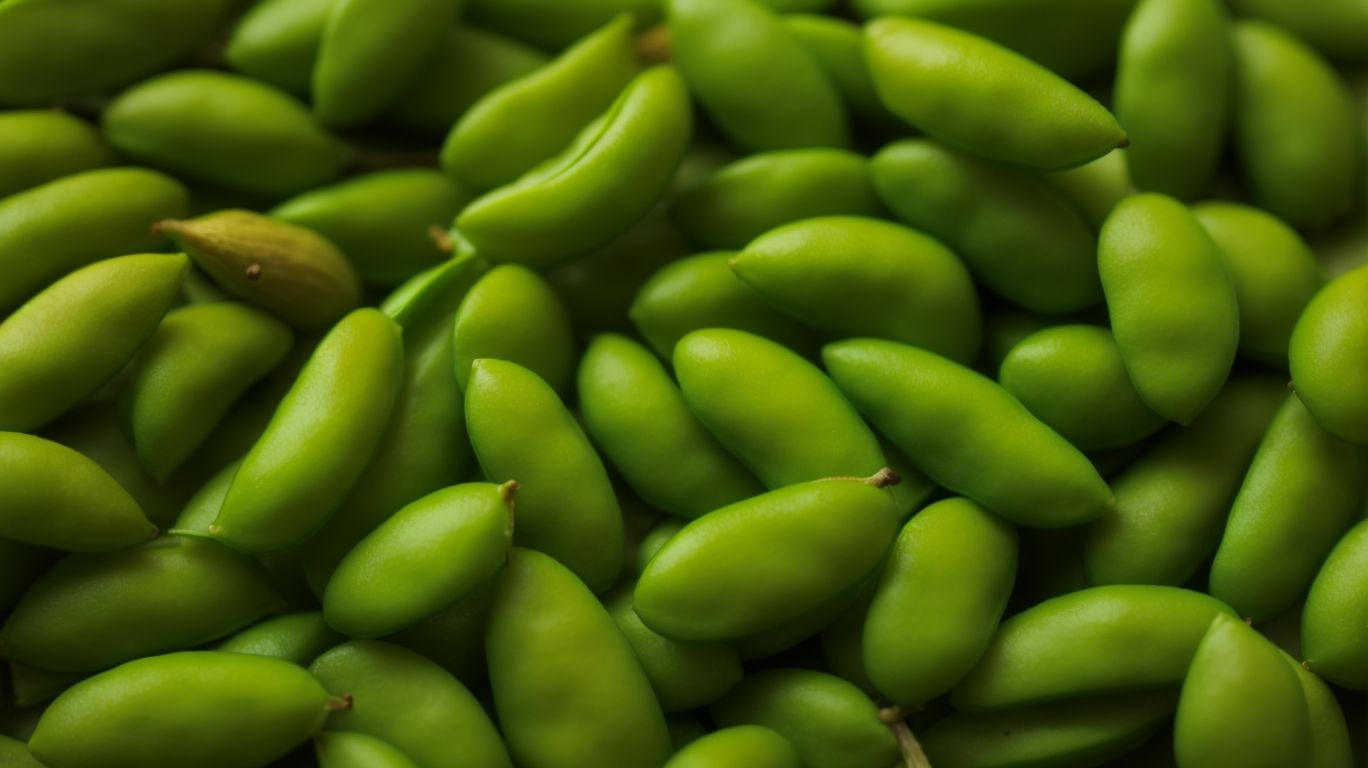
Credits: Poormet.Com – Charles Lewis
In conclusion, edamame offers a versatile and nutritious ingredient that can be enjoyed in various dishes, from appetizers to salads, providing a delicious source of plant-based protein and essential vitamins for a well-rounded diet.
Edamame, also known as young soybeans, is a powerhouse of nutrients, boasting high levels of protein, fiber, and antioxidants. Its mild flavor makes it a versatile addition to stir-fries, pasta dishes, and even as a standalone snack. This legume is not only delicious but also adds a vibrant pop of green to any meal, enhancing both visual appeal and nutritional value. Edamame is incredibly easy to prepare, whether boiled, steamed, or roasted, making it a convenient option for quick and healthy meals. To elevate the flavor profile of edamame, seasoning options like Maldon Sea Salt can be sprinkled over the pods for a burst of added taste and texture.”
Frequently Asked Questions
What is edamame and how do I cook it?
Edamame is a type of soybean that is typically served as a snack or appetizer. To cook edamame, simply boil it in salted water for 5-6 minutes and then drain.
Can I cook edamame in the microwave?
Yes, you can cook edamame in the microwave. Place the edamame in a microwave-safe dish, cover with water, and microwave for 2-3 minutes until tender.
Do I need to thaw frozen edamame before cooking?
No, frozen edamame can be cooked directly from frozen. Simply follow the cooking instructions on the package.
How do I add flavor to cooked edamame?
After boiling or microwaving, drain the edamame and toss it with your favorite seasonings, such as garlic powder, soy sauce, or chili flakes.
Can I cook edamame in the shell?
Yes, edamame can be cooked in the shell. This is the traditional way of serving it. Boil the edamame for 5-6 minutes and then remove the beans from the shell before eating.
What are some creative ways to use cooked edamame?
Cooked edamame can be added to salads, stir-fries, and even made into a hummus or pesto. Get creative and experiment with different recipes!

